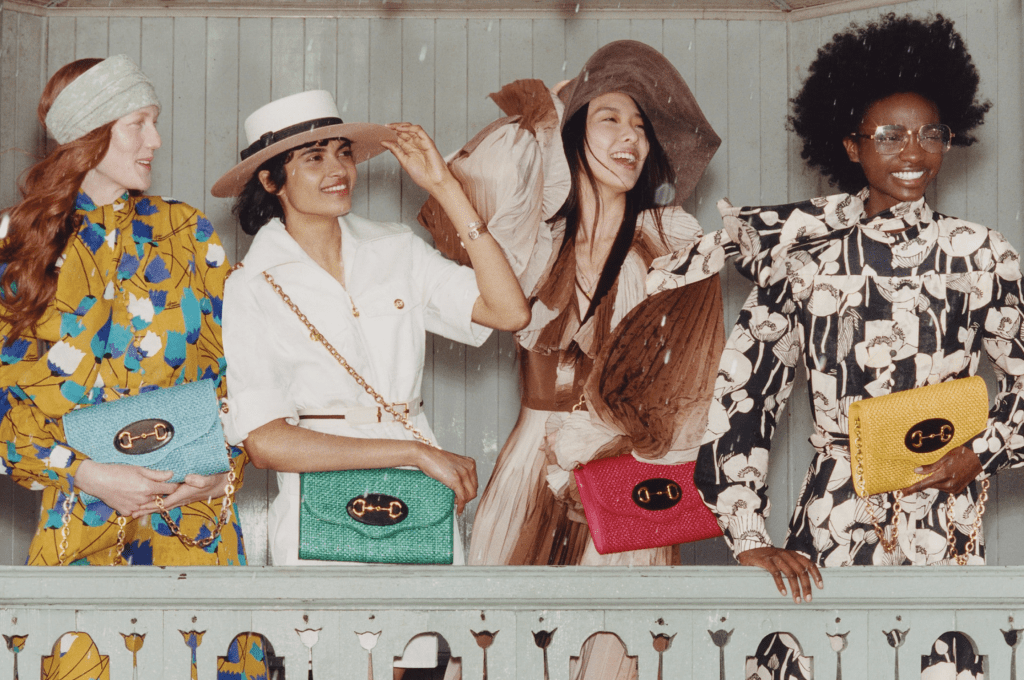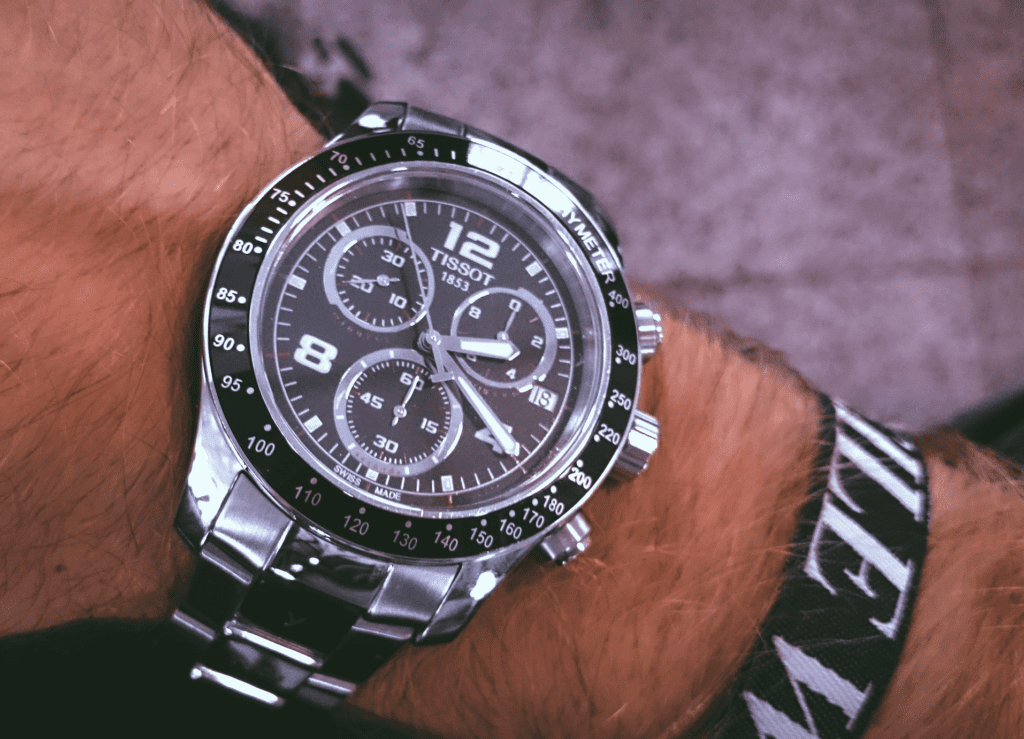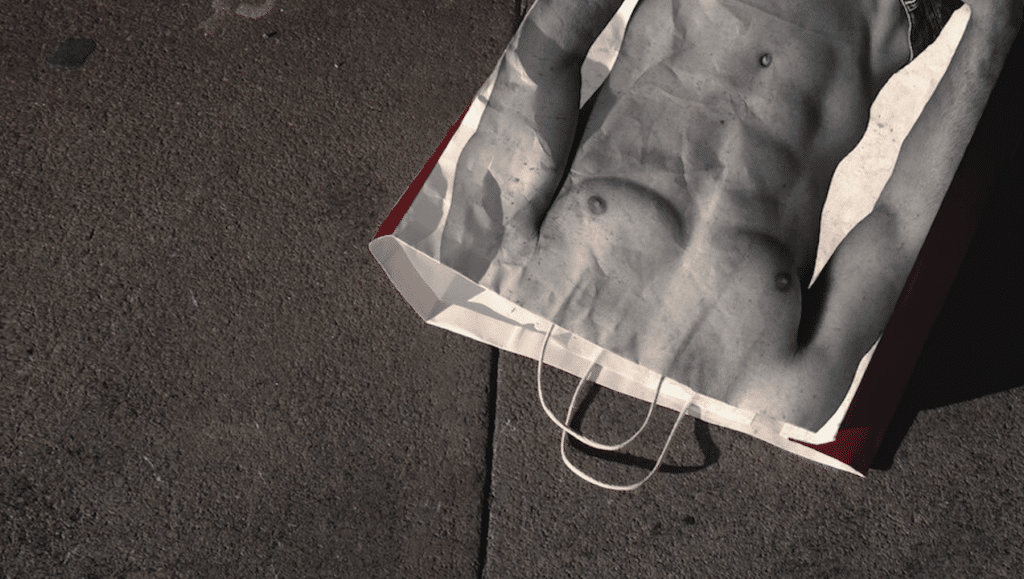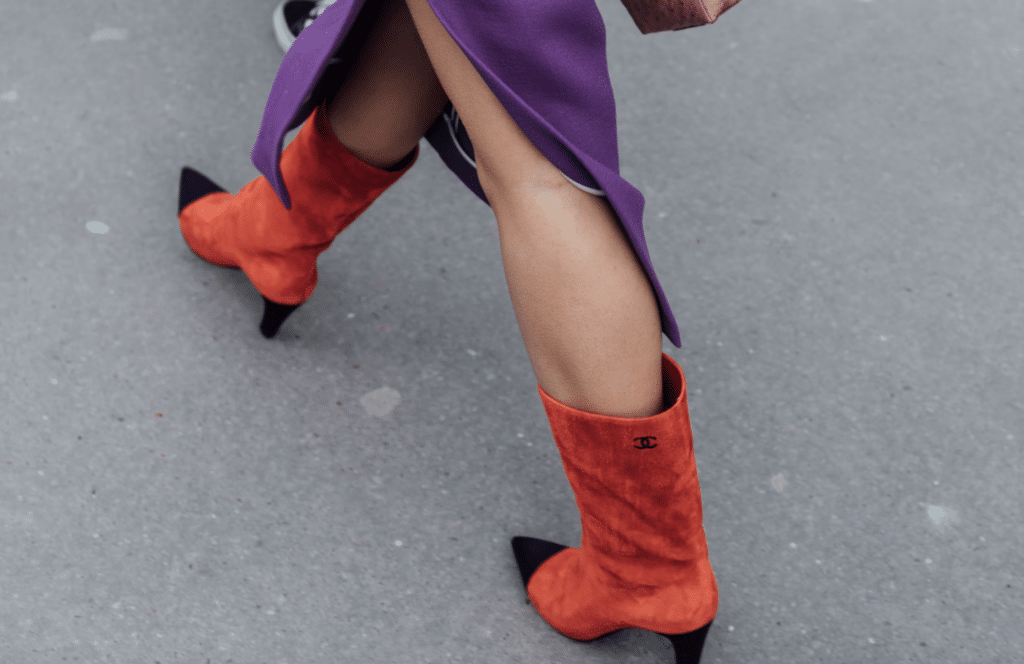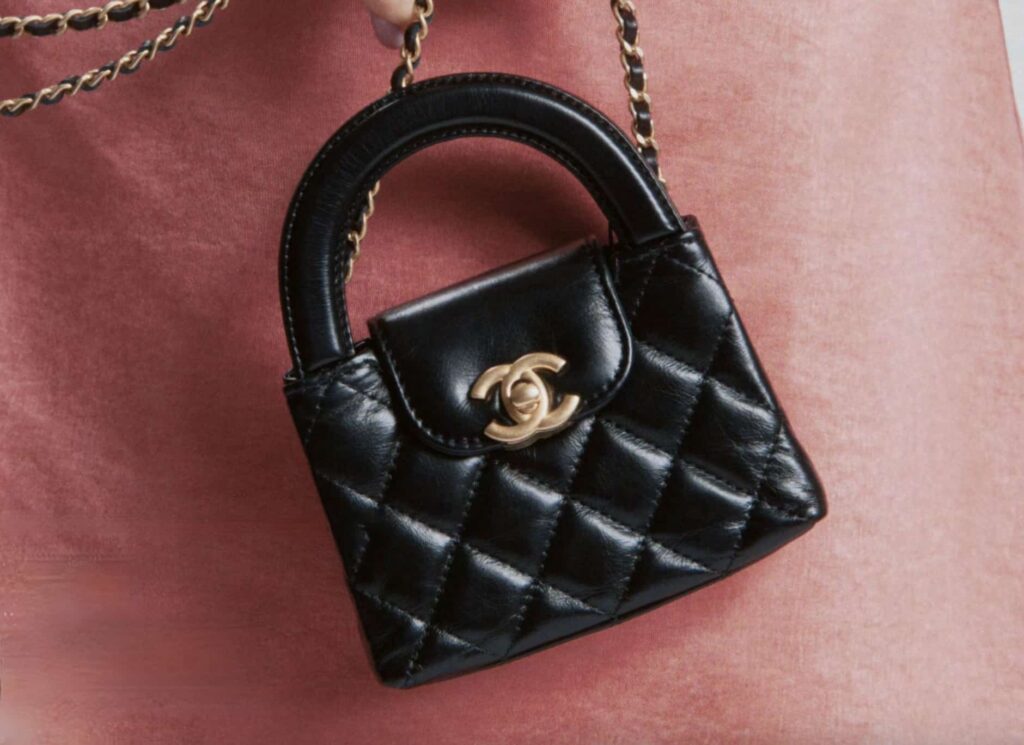Kering reported “excellent performance” for the first-half of the year, resuming what it says is its “trajectory of strong, profitable growth.” In a release on Tuesday, the Paris-based group revealed that revenue rebounded sharply in the first half of 2021 to 8.05 billion euros ($9.53 billion), up 54.1 percent on a year-over-year basis and up 8.4 percent compared to the same period in 2019, thereby, surpassing its pre-pandemic level. Comparing sales in the second quarter of the year to those of the previous three months, the Gucci-owner saw sales grow by 95 percent to 4.16 billion euros ($4.92 billion) and by 11.2 percent compared to Q2 of 2019.
Reflecting on the first six months of the year, Kering stated on Tuesday that sales were primarily driven by “excellent momentum” in North America, which accounted for 25 percent of H1 revenues, and the Asia-Pacific region, with 43 percent of all sales. For Gucci, alone, Asia-Pacific is responsible for a whopping 49 percent of sales, followed by North America, which represents 26 percent of sales.
And speaking of Gucci, Kering’s marquee brand posted first-half 2021 revenue of 4.48 billion euro ($5.30 billion), up 45.8 percent as reported and 50.3 percent on a comparable basis, enabling it to return to its pre-pandemic level. Kering noted that its “investment in brand and client engagement, across all touchpoints” is “paying off” for Gucci, and “gradual improvement in profitability is on track.” Still yet, it noted that in line with Gucci’s strategy to transform its distribution, which has been in the works since early 2020, wholesale revenue was down 9.6 percent on a year-over-year basis, and down 40.8 percent compared with the first half of 2019.

Kering similarly touted the success of Yves Saint Laurent, including a “sharp rebound in sales and profitability.” Sales for the Anthony Vaccarello-led brand amounted to €1.05 billion ($1.24 billion) in the first half of 2021, up 53.5 percent as reported and 58.2 percent on a comparable basis, while profitability is “back to its pre-pandemic level,” per Kering. “Sales bounced back in all geographic regions, and particularly North America and Asia-Pacific, reflecting the ongoing success of both the House’s iconic lines and its new collections.” Interestingly, wholesale revenue rose for YSL to 25.4 percent for the first half of the year.
Finally, for Bottega Veneta, the only other brand that it breaks out individually, Kering reported that it saw “very healthy growth across all distribution channels,” with revenue amounting to 707.6 million euro ($836.92 million) for the first half of 2021, up 40.6 percent year on year as reported and 45.0 percent on a comparable basis. “Sales in directly operated stores rose 45.2 percent compared with the first half of 2020 and 19.2 percent versus the same period of 2019,” according to Kering, which stated that such growth was driven by “very robust growth in North America in particular.”
In terms of revenues for the group’s Other Houses “rebounded sharply” for the first half to 1.48 billion euro ($1.75 billion), up 60.5 percent as reported and 64.5 percent on a comparable basis. “Comparable revenue in the first half of 2021 was 22.7 percent higher than in the first six months of 2019,” per Kering, which further asserted that “sales growth was very robust for all of the Other Houses’ distribution channels, reaching 63.1 percent for directly operated stores and 66.8 percent for the wholesale network.” Specifically, Kering revealed that “Balenciaga and Alexander McQueen once again delivered outstanding performances, as did the Jewelry Houses,” while “the Watchmaking brands and Brioni registered very encouraging rebounds.”
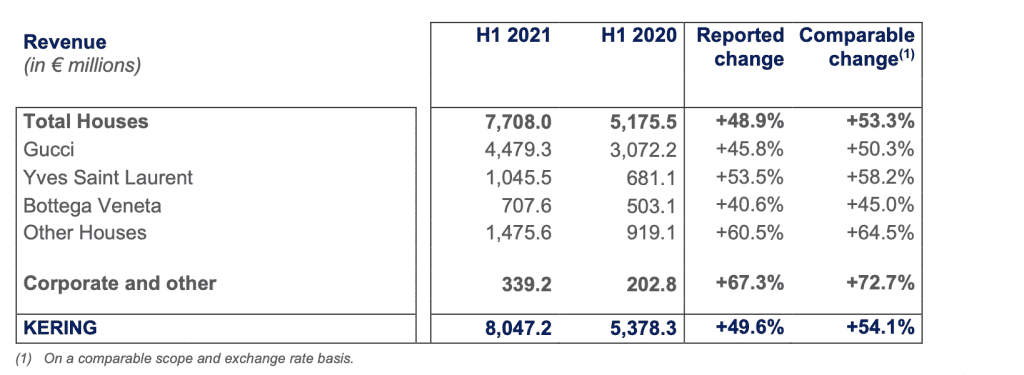
As a whole, Kering revealed that its brands’ comparable sales from the directly operated store network, including e-commerce, were 60.1 percent higher than in the first half of 2020 and up 11.2 percent from the first six months of 2019. The Houses’ “outstanding online momentum continued, with e-commerce revenue up 78.5 percent year on year,” with e-commerce representing 14 percent of total retail sales during the first six months of 2021. And finally, the breakdown of new versus “carry-over” goods has remained unchanged, with 70 percent of sales coming from legacy items, and 30 percent coming from new, seasonal products.
In a note on Tuesday, Bernstein analyst Luca Solca stated that Kering’s rebound is “more moderate” than the one reported on Monday by LVMH both in terms of sales and profit. Even with that being said, Solca states that Kering’s largest brand Gucci “will have more opportunity to impress” during the second half of the year “when its new collections” – such as its Aria collaboration with Balenciaga – “hit the market and the Gucci movie,” which is proving to be much-anticipated and highly controversial so far, “comes to the silver screen amid increasing social media buzz and against easy comps.”
Reflecting on the corresponding conference call, Solca noted that in terms of M&A, Kering’s management “emphasized that luxury is about scarcity and that there are only very few targets around.” Nonetheless, they “remain active in watching the market and working to find the best target in very good conditions.”




